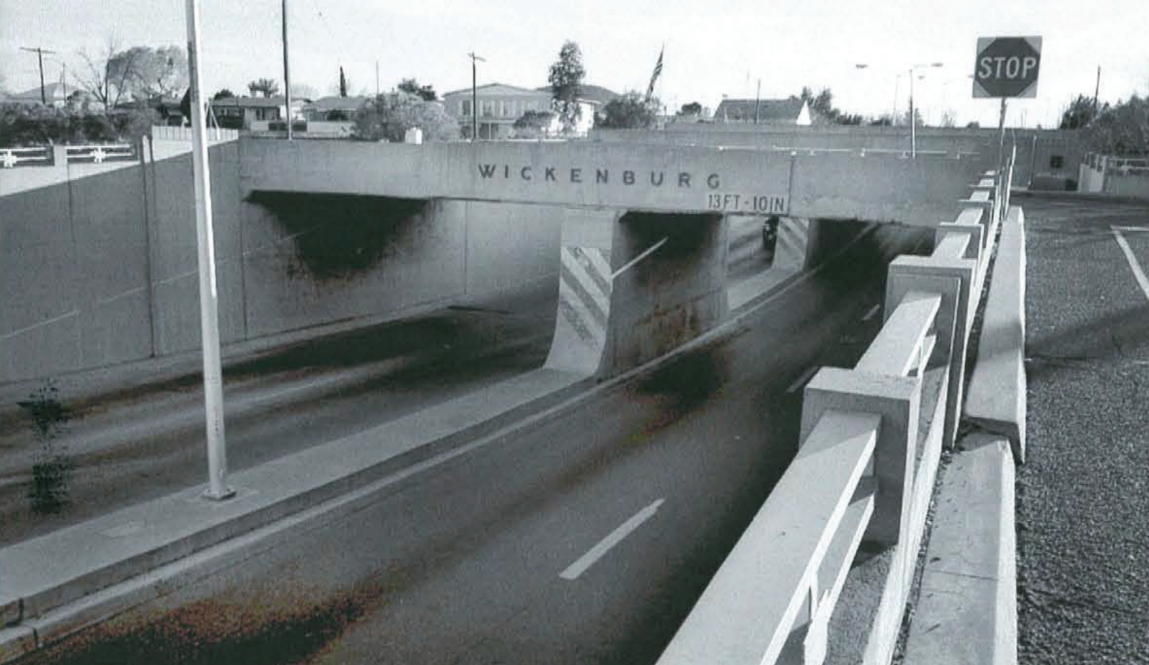Wickenburg Underpass does double duty
Wickenburg Underpass does double duty
Underpasses are made to separate vehicle, pedestrian, bicyclist and even train traffic. This reduces the chances of collisions and gives each mode of transportation a safer place for travel.
And that’s exactly what the Wickenburg Underpass has been doing since 1937.
In the 1930s, the Arizona Highway Department began to move away from constructing on-grade railroad crossings in favor of building underpasses that separated vehicle and rail traffic. In 1936, it happened on US 60 in Wickenburg. The design separated the Atchison Topeka & Santa Fe Railroad from the intersection of Washington and Railroad streets.
According to the historic inventory description for this underpass, it was made of "two separate concrete rigid frame spans (one to carry Railroad Street, the other carrying Washington Street, Frontier Street and the Santa Fe tracks), supported by concrete abutments."
The underpass’ appearance was timely, taking on the Art Moderne style, which is sometimes called “Streamline Moderne,” and originated in the 1930s. Art Moderne features on the underpass included concrete pylons at the corners and the distinctive aluminum letters spelling out “WICKENBURG” on both sides of the underpass.
Construction began in the spring of 1936 and the underpass was dedicated on April 26, 1937. Vehicle traffic and trains are still separated here and the Art Moderne “WICKENBURG” still adorns the underpass. (The photo below shows the underpass as it appeared in 2003.)

